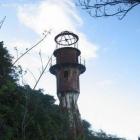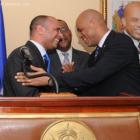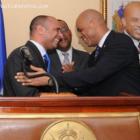ADVERTISEMENT
US marines
Land Ownership of foreigner in Haiti during US Occupation of 1915
In November 11, 1915, the Haitian President Sudre Dartiguenave was forced to sign a treaty with ratification by the Haitian Senate The document legitimized the US occupation and put Haitian finances and government under the control of the US for the next 20 years. The controversial amendment also aimed to disbanding the Haitian army and permit foreign land ownership that had been outlawed since the Haitian Revolution. However, the reluctant lawmakers rejected that notion and rather began drafting a new anti-American constitution, but under U.S pressure, that bill was kept undecided by President Dartiguenave till 1929. In 1929, a series of strikes and uprisings against the U.S initiated the withdrawal of U.S Marines from Haiti. In 1934, in concert with "Good Neighbor Policy" introduced by President Franklin D. Roosevelt, U.S Marine was officially withdrawn from Haiti except retaining fews for maintaining economic connections.
The body of Charlemagne Peralte after his death
Here is a picture of The body of the leader of the Haitian revolution, Charlemagne Péralte. His death at the age of 33, made Charlemagne Péralte a martyr for the Haitian nation.
His death was caused by a betrayal from one of his officers.
Jean-Baptiste Conzé became an informant to US Marines Sergeant Herman H. Hanneken
Charlemagne Péralte was assassinated with a shot in the heart at close range
Haitian Police Force, Garde D'Haiti, FAD'H trained during US Occupation of Haiti
Here is a picture Haitian Police Force, also known as Garde D'Haiti which later became FAD'H being trained during US Occupation of Haiti
In spite of the resentment with their occupation, the Americans during their 19 years of occupation built many new roads, schools, irrigation, agricultural projects, piers and many lighthouses. They also trained an important political force, the Haitian National Police force (Garde D'Haiti). However, the great depression of the 1930s forced the U.S to justify its huge spending to occupy an unpromising land like Haiti. In 1930, the U.S President Hoover, sent a delegation to the Haitian President Louis Borno for considering to hold elections and began the process of withdrawing American administrators and forces. The last Marine left Haiti on August 15, 1934 after a formal transfer of authority to the Haitian military Garde d'Haiti. However, a small American delegation remained there till 1941 to defend American economic interests.
Raoul Cedras on the way to exile
Here is a picture of General Raoul Cedras and his family on October 13, 1994. He is being escorted by US Military troops as he is heading to the airport in Port-au-Prince on his way to exile
Military Leader Raoul Cedras Brutal Rule and Exile
A few months into Aristide's rule, Cedras orchestrated a coup d'etat, which successfully forced Aristide into exile in the U.S. Cedras became Haiti's military leader, abdicating his position as president, which held no interest for him. Parliament then selected Supreme Court Justice Joseph Nerette as interim president to hold the office until elections were organized. The U.S. stalled the elections, Nerette bowed out of office, and Supreme Court Justice Emile Jonassaint replaced him.
The U.S. finally convinced Cedras he needed to leave the country in the interests of stabilizing the government and its people. Aristide returned to power and negotiated with Panamanian President Ernesto Perez Balladares to receive Cedras. Balladares sanctioned Aristide's request so Haitians' lives could be restored to normalcy and the country able to move forward.
American Marines In 1915 defending the entrance gate in Cap-Haitian
Here is a picture of American Marines defending the entrance gate in Cap-Haitian in 1915
As a result, in 1915, the pro-US Haitian President Jean Vilbrun Guillaume Sam seized power and ordered a massacre of 167 political prisoners, but he was lynched by an angry mob into the French Embassy. In July 28, 1915, the U.S President Wilson ordered an invasion. The 330 marines stormed the shores of Port-au-Prince and soon set up an interim government. Although with the U.S occupation, peace and order was restored in Haiti, the Haitians were never happy with the Americans. The poor were unhappy with their assigned road building works, patriotic middle class resented the foreigners and the elite upper class was denied of the access to the government spending that had previously made them rich.
US Marines boarding the U.S.C Connecticut july 1915 to Haiti.
Here is a picture of US Marines boarding the U.S.C Connecticut july 1915 as they are heading to Haiti
In the beginning, following the assassination of Jean Vilbrun Guillaume Sam, a Pro-U.S Haitian President, the U.S President Woodrow Wilson sent a first team of U.S Marines into Haiti on July 28, 1915. They were sent to restore order and maintain political and economic stability in the country. However, in the wake of the First World War, the President Wilson at the same time also wanted to establish U.S dominance in the region by keeping the German settlers away from Haiti. Because, the peasant guerrillas (cocos) from the northern Haiti were heavily burdened with German loans and they wanted the Germans to invade and restore order in the country.
Thus the 19- year U.S. occupation in Haiti began with the landing of 3,000 Marines at Port-au-Prince under the leadership of Admiral William B. Caperton and that continued until 1935. However, prior to that in December 1914, in the fear of foreign intervention, Wilson administration sent U.S. Marines to Haiti who removed $500,000 from the Haitian National Bank for safe keeping in New York.
Presidential palace of President Villbrum Guilluiame Sam who was assassinated
Presidential palace of President Villbrum Guilluiame Sam who was assassinated
At the beginning of the 20th century, United States became increasingly concerned with the level of German activity and influence in Haiti. German businesses in Haiti dominated commerce in the entire area.
German nationals controlled over 80 percent of Haiti international commerce. They owned utilities in Cap Haitien and Port-au-Prince, wharf, railroad serving the Plain of the Cul-de-Sac. To get around Haitian law that forbid foreigners from owning land in Haiti, German men were increasingly marrying Haitian women and open businesses.
Although the sphere of U.S influence in the Caribbean started in 1898, in 1915, during the First World War, the U.S President Woodrow Wilson feared that Germany could invade Haiti and establish a military base near the Panama Canal that was built with huge U.S investment. The U.S President had right reasons to worry because then there were many Germans settlers living in Haiti who had financed the rampaging cacos with loans which were almost impossible to be repaid and they were at the mercy of the Germans to invade and restore order.
American Marines guard Haitian Cacos captured outside Port-au-Prince
Here is a picture of several American Marines guarding Haitian Cacos captured outside Port-au-Prince.
Since the time Haiti got its independence from France in 1804, it had gone through a succession of dictators. At the beginning of the twentieth century, the population of the island was poor, uneducated and hungry. Between 1908 and 1915, the country was totally broken down. More than seven men seized the presidency, regional warlords and peasant guerrillas from the north (cocos) fought in the streets; more than 2,000 Haitian lives were lost.
U.S. Marines in Fort Liberte in 1916
Here is a picture of United States Marines during the occupation of Haiti in 1916. This picture was taken during a hunting operation of Caco.
The United States occupation of Haiti started July 28, 1915 during the government of U.S. President Woodrow Wilson and ended on August 1, 1934 during the government of Franklin D. Roosevelt

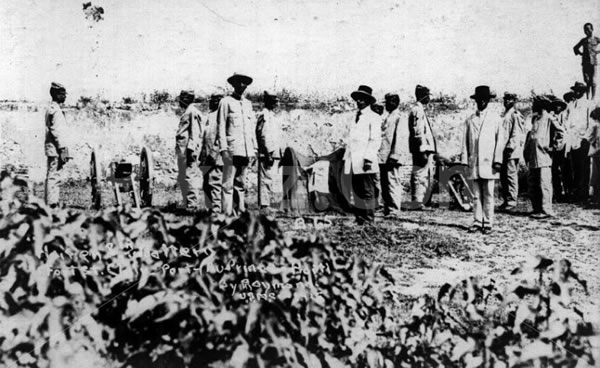
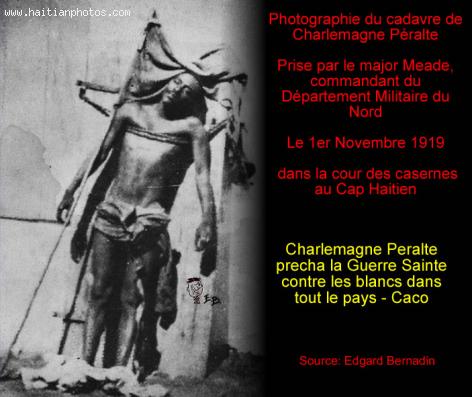
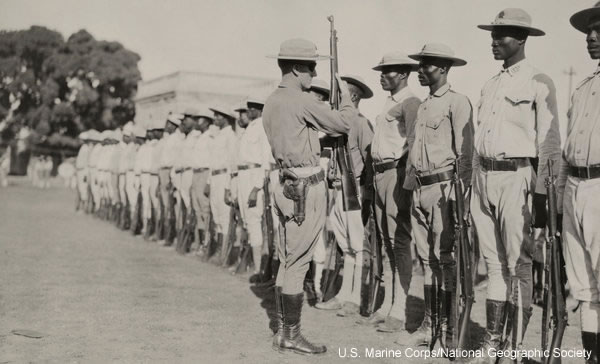
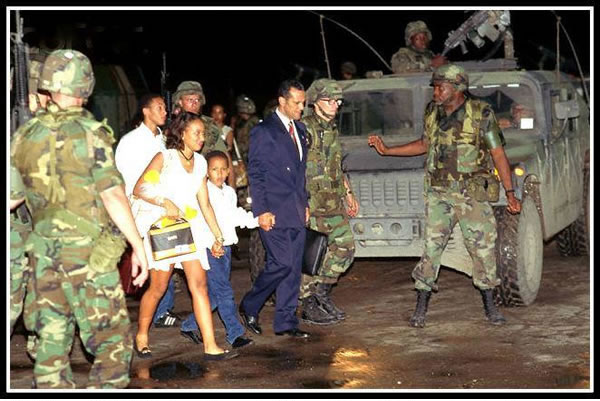
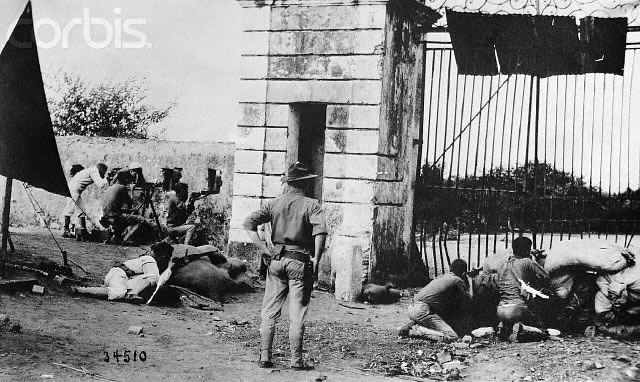
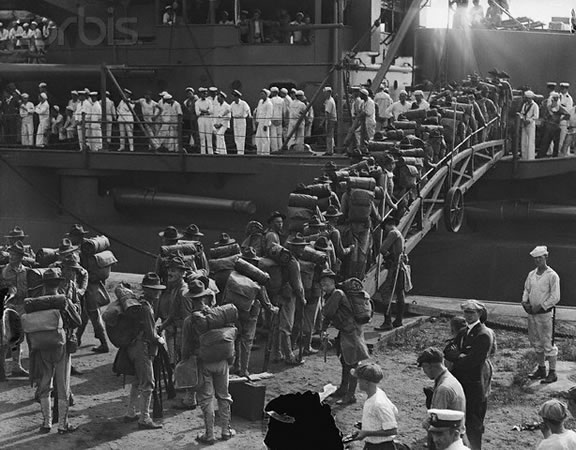
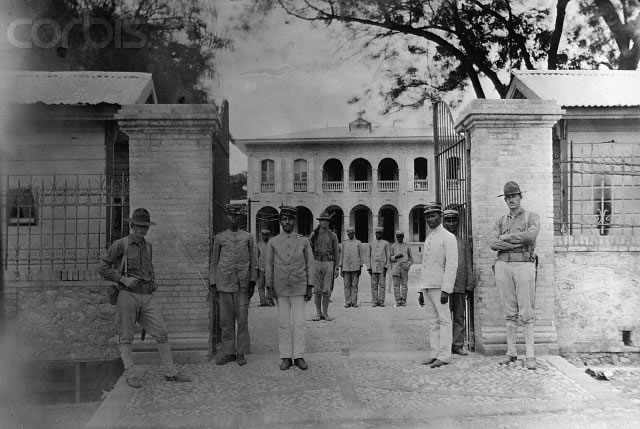
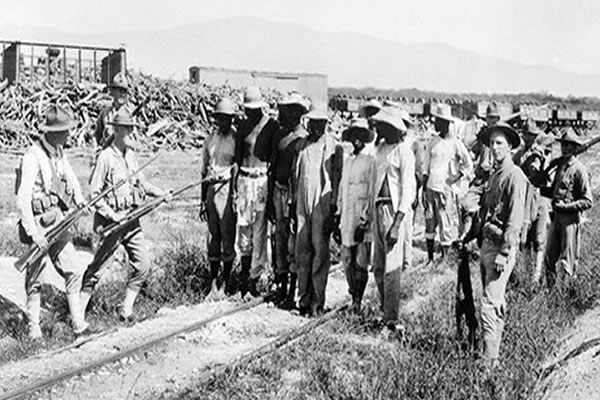
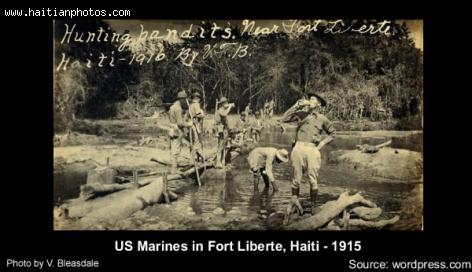
 Duty Free Americas (DFA) store at Toussaint Louverture...
Duty Free Americas (DFA) store at Toussaint Louverture... 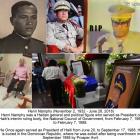 Henri Namphy Haitian General and President , buried in...
Henri Namphy Haitian General and President , buried in... 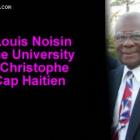 Dr. Louis Noisin, Cap-Haitien
Dr. Louis Noisin, Cap-Haitien 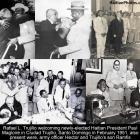 Rafael L. Trujillo welcoming Paul Magloire in Santo Domingo
Rafael L. Trujillo welcoming Paul Magloire in Santo Domingo  Meet Haitian-American professional baseball pitcher Touki...
Meet Haitian-American professional baseball pitcher Touki...  Commissioner Frantz Pierre indicted for accepting bribes
Commissioner Frantz Pierre indicted for accepting bribes 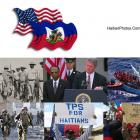 Haitians, the second largest black immigrant group in the US
Haitians, the second largest black immigrant group in the US 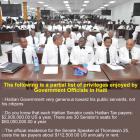 Partial list of privileges enjoyed by Government officials in...
Partial list of privileges enjoyed by Government officials in... 
